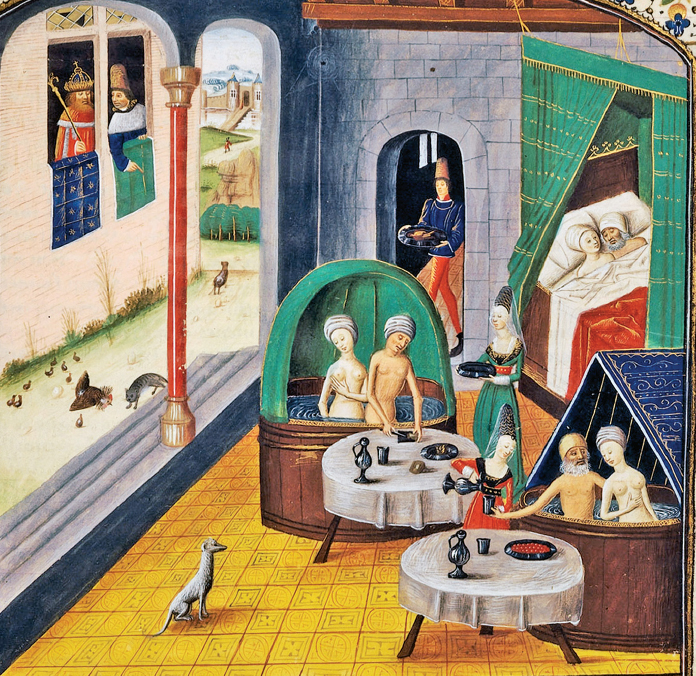What explains the social unrest of the late Middle Ages?
AAT THE BEGINNING OF THE FOURTEENTH CENTURY, famine and disease profoundly affected the lives of European people. As the century wore on, decades of slaughter and destruction, punctuated by the decimating visits of the Black Death, added further woes. In many parts of France and the Low Countries, fields lay in ruin or untilled for lack of labor. In England, as taxes increased, criticisms of government policy and mismanagement multiplied. Crime and new forms of business organization aggravated economic troubles, and throughout Europe the frustrations of the common people erupted into widespread revolts.

City BrothelIn this rather fanciful scene of a medieval brothel, two couples share baths and wine, while a third is in bed in the back, and two nobles peer in from a window across the street. Most brothels were not this elaborate, although some did have baths. Many cities also had commercial bathhouses where people paid a small fee to take a hot bath, a luxury otherwise unavailable. Bathhouses did sometimes offer sex, but their main attraction was hot water. (Bibliothèque nationale de France)